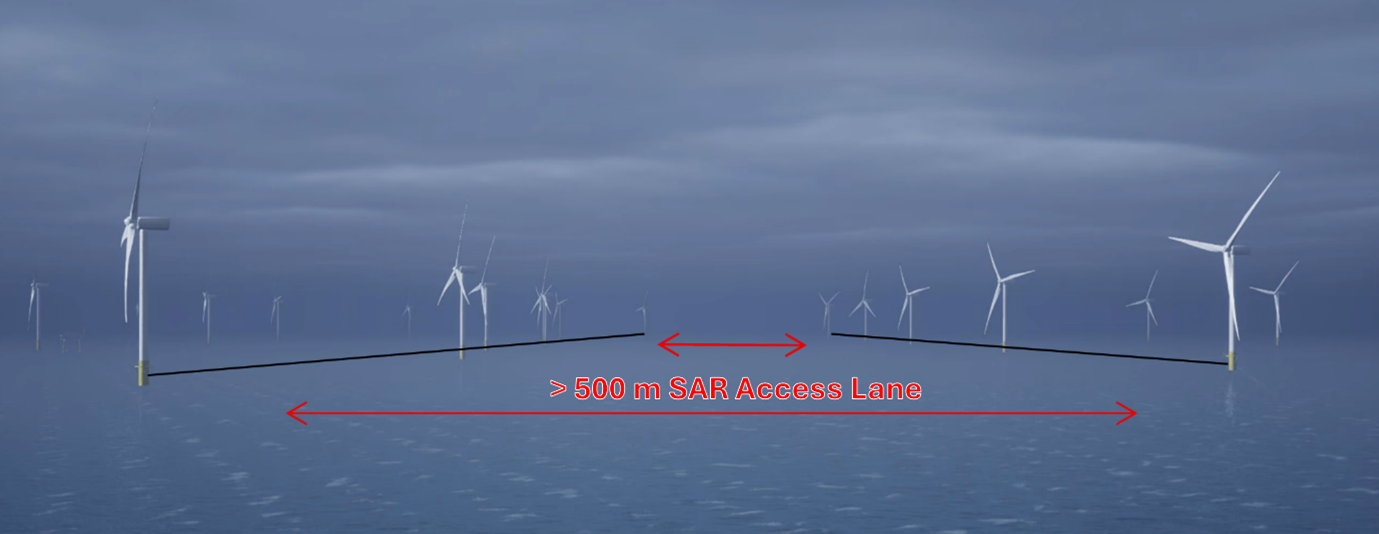Designing an offshore wind farm (OWF) layout necessitates considering multiple, often competing interests, and constraints. Factors include engineering aspects such as wind yield and energy cost, in addition to external aspects, such as its appearance within the seascape and landscape, bathymetry and geotechnical properties of the seabed.
Another key constraint, sometimes overlooked by developers, is ensuring the safety and effectiveness of search-and-rescue (SAR) missions within the OWF. Coast Guards have a duty to provide SAR to persons in distress within their responsible regions, including within proposed OWFs, in line with many national and international conventions, such as Convention of the Law of the Sea (UNCLOS), Convention on Safety of Life at Sea (SOLAS) and Convention on Maritime Search and Rescue.
OWF layouts are expected to support SAR operations by adhering to relevant national guidance and key design principles. In the UK, this is primarily outlined in the Maritime and Coastguard Agency (MCA)’s Marine Guidance Note (MGN) 654. Ireland recently formalised its own guidance in June 2025, with the Department of Transport (DoT)and Irish Coast Guard (IRCG) publishing their Guidance on Safety of Navigation& Emergency Response and Guidance and Operational Considerations for SAR and Emergency Response, respectively. Similar guidance is published in the US Coast Guard’s NVIC 02-23 and Australian Maritime Safety Authority’s policy. The overriding objective is to ensure that turbine layouts are designed to allow safe transit through OWFs by SAR helicopters operating at low altitude in bad weather, and surface vessels, conducting search and or rescue activities. Through our extensive experience advising developers with SAR considerations in OWFs, we have identified three primary SAR layout principles that coastguards look for, which developers need to consider from the outset when designing and proposing OWF layouts.



